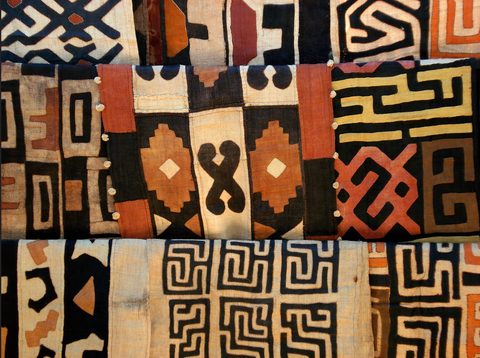The Fascinating History and Cultural Significance of Kuba Cloth


The History of Kuba Cloth
For centuries, the Kuba people of Central Africa have been creating intricate and beautiful textiles known as Kuba cloth. These textiles have been used for a variety of purposes throughout history, from ceremonial garments to everyday household items. Today, Kuba cloth is enjoying a resurgence in popularity, thanks to its striking geometrical patterns and earthy colours. This article will explore the history of Kuba cloth, from its origins to its modern-day uses.

The Origins of Kuba Cloth
The origins of Kuba cloth can be traced back to the 17th century, when the Kuba Kingdom was established in what is now the Democratic Republic of Congo. The Kuba people are believed to have originally come from West Africa, and they brought their textile-making skills with them when they settled in Central Africa.
In the early days of the Kuba Kingdom, Kuba cloth was mainly used for ceremonial purposes, such as royal robes and headdresses. Kuba cloth was also used to create a variety of other objects, such as bags, mats, and ceremonial masks. Over time, the production of Kuba cloth became more widespread, and it started to be used for everyday items such as clothing, bedding and tablecloths.

Raffia cloth is the more common raw material of Kuba cloth, made from the leaves of the raffia palm tree. It takes a lot of hard work to make raffia cloth, as the leaves must be harvested, dried, and beaten to extract the fibres. The fibres are then dyed and woven into intricate patterns. Bark cloth is a less common type of Kuba cloth, made from the bark of a fig tree which is hand processed this process includes boiling and beating and is very time consuming.

Kuba Cloth Textiles: The Beauty of Cut Pile and Flat Weave
Kuba cloth can be divided into two main categories: cut pile cloths and flat-woven cloths. Cut pile cloths have fibres that have been cut to create a pile, resulting in a fuzzy, textured surface. These cloths often have patterns created by embroidery. This creates a fuzzy and shaggy texture, and it is often used for more decorative and ceremonial purposes. On the other hand, flat-woven cloths have no pile, and they are often decorated with appliqué, embroidery or embellishments. It is often used for clothing, bedding, and other utilitarian purposes. Both types of Kuba cloth textiles are beautiful and have their own unique qualities.

The historical uses of Kuba cloth
In the past, Kuba cloth was often used as a form of currency, and it was highly valued for its beauty and craftsmanship. Kuba cloth was also used as a way to indicate one's status within the Kuba society. Different patterns and colours of Kuba cloth were associated with different levels of status, and they were often worn to show one's rank and position.

The evolution of Kuba cloth over time
While the basic techniques of weaving and dyeing Kuba cloth have remained largely unchanged, the designs and patterns have evolved significantly over time. In the past, the designs were mainly geometric and abstract, but in the 20th century, Kuba artists started incorporating more figurative and representational elements into their designs.

In the modern day, Kuba cloth is still used for a variety of purposes, both traditional and contemporary. Some of the traditional uses include ceremonial robes, headdresses, and masks. However, Kuba cloth is also being used in more modern ways, such as in fashion, interior design, and even as art pieces. Some contemporary artists have even started using Kuba cloth as a canvas for their paintings and drawings.

The Wataka Kuba Cloth Socks: A New Twist on an Ancient Tradition
The Wataka Kuba cloth socks are a modern take on inspirational Kuba cloth. By taking this traditional fabric and incorporating a pattern into socks, Wataka has created a unique and stylish product that honours the history and tradition of Kuba cloth. The socks feature traditional Kuba patterns, while also being functional and comfortable. The Wataka Kuba cloth socks are a testament to the versatility and enduring appeal of this traditional fabric.
The rich mustard colour used in the welt of the sock is inspired by the gold that was once traded for Kuba cloth, and it adds a pop of colour to any outfit. The socks are made with high-quality materials and attention to detail, and they are designed to be both stylish and comfortable.

The Wataka Kuba cloth socks are a unique and stylish product that honours the tradition and history of Kuba cloth. By using ethical and sustainable materials, Wataka is showing respect for the past while also looking to the future. The socks are not only beautiful, but they are also functional and comfortable. If you're looking for a way to add a little something special to your wardrobe, the Wataka Kuba cloth socks are the perfect choice.
Thank you for reading this article, please comment below or ask questions. You can access our other posts here.





Francoise V —
Loved reading your article! I’ve bought many pairs of your socks!!! Just can’t get enough of all the amazing designs, and just love the stories behind each one!